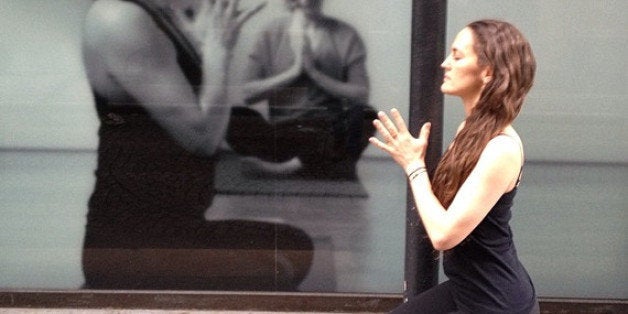
This past Sunday morning I gave a workshop on the Bhagavad Gita for my friends' yoga teacher training in Paris. It had been planned since last fall, long before anyone could have imagined the violence that was to grip Paris this past week, culminating in the deaths of 17 innocent people. Our workshop was scheduled via video-conference for 9 a.m. New York time, so 3 p.m. Paris, simultaneous with the enormous street rally supporting freedom of speech and the refusal to be terrorized into factionalism, inaction or silence.
Any discussion of the Gita is about life's meaning and purpose, about dharma and karma: doing the work that is necessary to live fully and with integrity in the world. It is an exposition about how we make meaning through our actions so that we live lives of meaning. The Gita is about how to be a Yogin, which we can define as one who strives to connect mind, body, and heart to life fully and fiercely in the world. It takes place on a battlefield, which can be said to be the Field of Consciousness.
If you want to make your reading of the Gita truly meaningful, view the field as your consciousness with the entire scenario playing out inside of you: the good guys, the bad guys, the conflict, the beauty, the heartache, and the need to do the right thing despite doubt and overwhelm. Then expand the field beyond the parameters of your individual experience, so it becomes your life in the world. The story is as small as you making a daily decision and as colossal as a city in shock from a terrorist act. One of the central questions arising from the text is: Who and What do you want to be in the face of whatever life is presenting to you?
There was a gut-wrenching symmetry to my teaching about the Gita to my Paris friends this weekend in terms of my personal history. On 9-11, I watched the buildings burn from Washington Square Park and breathed in the stench issuing from the site for a full month afterwards. Returning home each day, I stripped off my clothes upon entering my apartment, tied them in a plastic bag and stepped directly into the shower to scrub my skin and hair. The smell was pervasive, even in the upstairs hallways of my building, and I blocked the edges of my door with painters tape to keep it out as much as possible. I didn't sleep for weeks and am not really sure how I functioned during that sleepless time, although it was the experience of many people, so my probable slowness or erratic behavior would have been the norm.
I immediately found that nothing made sense to me but moving on my mat, preferably in community. With a solid career in the art world and without any intention of teaching yoga professionally, I signed up for a yoga teacher training, and a door opened that I had never known was there. I walked away from a great position at the MoMA and stopped reaching out to galleries for studio visits. Over time I integrated my art life with my yoga life, but yoga taking center stage was something I had never imagined. I have no regrets about this. Only gratitude. When things got really tough, yoga was there.
In the Gita the god Krishna tells the warrior Arjuna that there are two yogas: the yoga of wisdom, Jnana Yoga, and the yoga of action, Karma Yoga, and the two must be joined. For not even for a moment can a man be without action, he says. What he means by this is that even inaction is a form of action, so, basically, if you're not part of the solution, you're part of the problem. Yoga means to yoke, to connect. We need to do the work of joining wisdom to action in our daily lives, no matter how arduous, painful, or ecstatic that may be.
For my friends in Paris, this need has been presented to them in a harsh and terrifying way this week. At the center of their collective field of consciousness is fear, trauma, and heartbreak. In the face of senseless violence, they have to do their yoga. They have to examine what resides within themselves and then act in the aftermath of a tragedy formed by every variety of ethnic and cultural fear, stereotype, and hatred. Sometimes doing the yoga means standing up for a freedom of speech that includes supporting people's right to publicly advocate or parody different beliefs and opinions, and sometimes we may offend or be offended by that.
It was 13 years ago this past week that I began my yoga teacher training. We were four months out from 9-11. I had just read the Gita for the first time and the discussion had begun. The text begins: On the field of Truth, on the battle-field of life, what came to pass...? As our yoga philosophy teacher, Dr. Douglas Brooks, told us that first weekend, Yoga asks the questions: What is it that you really want? And what are you willing to do about it?
We cannot choose what happens to us, I said somewhere in the midst of our video-conference this past Sunday. But we can choose who we will be in relationship to what happens. To do yoga means to create connection. How do you wish to connect to your life? To the people around you? To what has happened? On the field of consciousness, we all need to figure that out, and then take the appropriate action. In the end, it's the yoga off the mat and in the world that really counts.